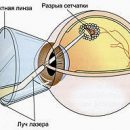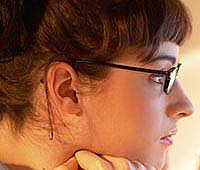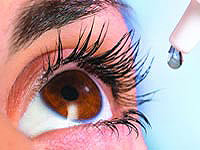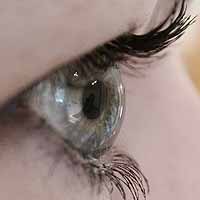Conjunctivitis scares us because the eyes will quickly blush. However, the disease does not harm vision. If the child appears redness, it immediately needs to show a doctor. One type of conjunctivitis will go by itself, and the other requires medical intervention.
Content
Conjunctivitis scares us because the eyes quickly blush. However, the disease does not harm vision. If the child appears redness, it immediately needs to show a doctor. One type of conjunctivitis will go by itself, and the other requires medical intervention.
Causes of conjunctivitis
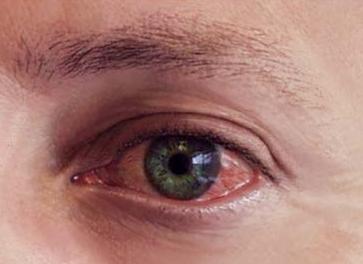 Conjunctivitis can be caused by infection (bacteria or virus), allergies or particles irritating shell.
Conjunctivitis can be caused by infection (bacteria or virus), allergies or particles irritating shell.
Bacteria and cold viruses and other infections, including ear infections, nasal sinuses, angina, sexual infections: chlamydia and gonorrhea, can cause conjunctivitis.
Also conjunctivitis can be caused by allergies. This is a very frequent phenomenon, especially among children who suffer from allergic reactions like a hay fever. Here is a list of several pathogens: grass, pollen of ambrosia, animal wool, ticks living in household dust.
Also, environmental particles can irritate the eye membrane, for example, household chemicals: chlorine, soap, cigarette smoke, smoke and exhaust gases.
Conjunctivitis in babies
Babies are especially wound. If not to treat conjunctivitis in the infant, it may turn into a serious illness.
If the mother during childbirth was sick sexual disease, then bacteria or virus could get into the eye canal of the child. In such cases, the doctor treats his eyes with drops or ointment with antibiotics immediately after the birth of a child. It happens that ointment or drops cause chemical conjunctivitis, but it quickly passes.
Many children are born with a narrow or blocked tear canal. It takes place in itself, but sometimes it can cause conjunctivitis.
Symptoms
Various types of illness cause various symptoms. He can also be different from every child.
One of the most common symptoms is discomfort in the eye. Feeling can resemble the presence of sand. Blushing inner eye sheath. Eye discharge appear, which leads to sticking eyes in the morning. Some children swell the eyelid and their eyes are sensitive to light.
In the case of allergic conjunctivitis itching and tears - frequent symptoms.
Probability of infection
Infectious conjunctivitis is infectious, and allergic and mechanical - no.
The child can get infected by touching the patient or the patient's thing, for example, to a napkin. In the summer, children are infected, swimming and wiping into one towel. The disease also extends through cough and sneezing. Children, patients with infectious conjunctivitis, must be left at home so that they do not infect others.
If one eye is a patient, and the second is not, then you need to follow the touch, so as not to infect a healthy eye.
Prevention
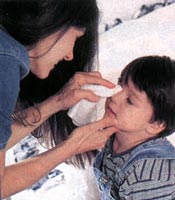 Learn children often wash your hands with warm water with soap. Also, they should not share personal objects like eye drops, napkins, handkerchiefs, cosmetics for eyes, washcloths, towels and pillowcases with other people.
Learn children often wash your hands with warm water with soap. Also, they should not share personal objects like eye drops, napkins, handkerchiefs, cosmetics for eyes, washcloths, towels and pillowcases with other people.
Do not forget to wash your hands after touching the child's patient, as well as throw away the used cotton or gauze. Fix the towel and bed linen, which the sick child uses, in hot water separately from other things.
If the child suffers from allergic conjunctivitis, close the windows during the flowering of plants, try to vacuum the house more often.
If a pregnant sick or ever hurt sexual infections, she needs to go checked or be treated for a doctor.
Treatment
 In some cases, conjunctivitis does not need treatment, but if the doctor suspects that the disease was caused by bacteria, it will prescribe a drop or ointment with antibiotics.
In some cases, conjunctivitis does not need treatment, but if the doctor suspects that the disease was caused by bacteria, it will prescribe a drop or ointment with antibiotics.
Often children resist drops. In this case, drip drops into a corner of a closed eye. When the child opens the eye - the medicine will flow inside. If you are tired of dripping drops, then ask the doctor about ointments, which can be applied to the eyelid, it melts and gets inside the eye.
If a child has an allergic conjunction, the doctor will prescribe an antihistamine medicine in the form of tablets, liquid or eye drops.
Cool or warm compresses, acetaminophen or ibuprofen can help the child gain comfort. Wipe the corners of the sick eye to prevent zaking.
When calling a doctor
Refer to the doctor immediately when identifying symptoms of the disease to determine the cause and appoint proper treatment.

